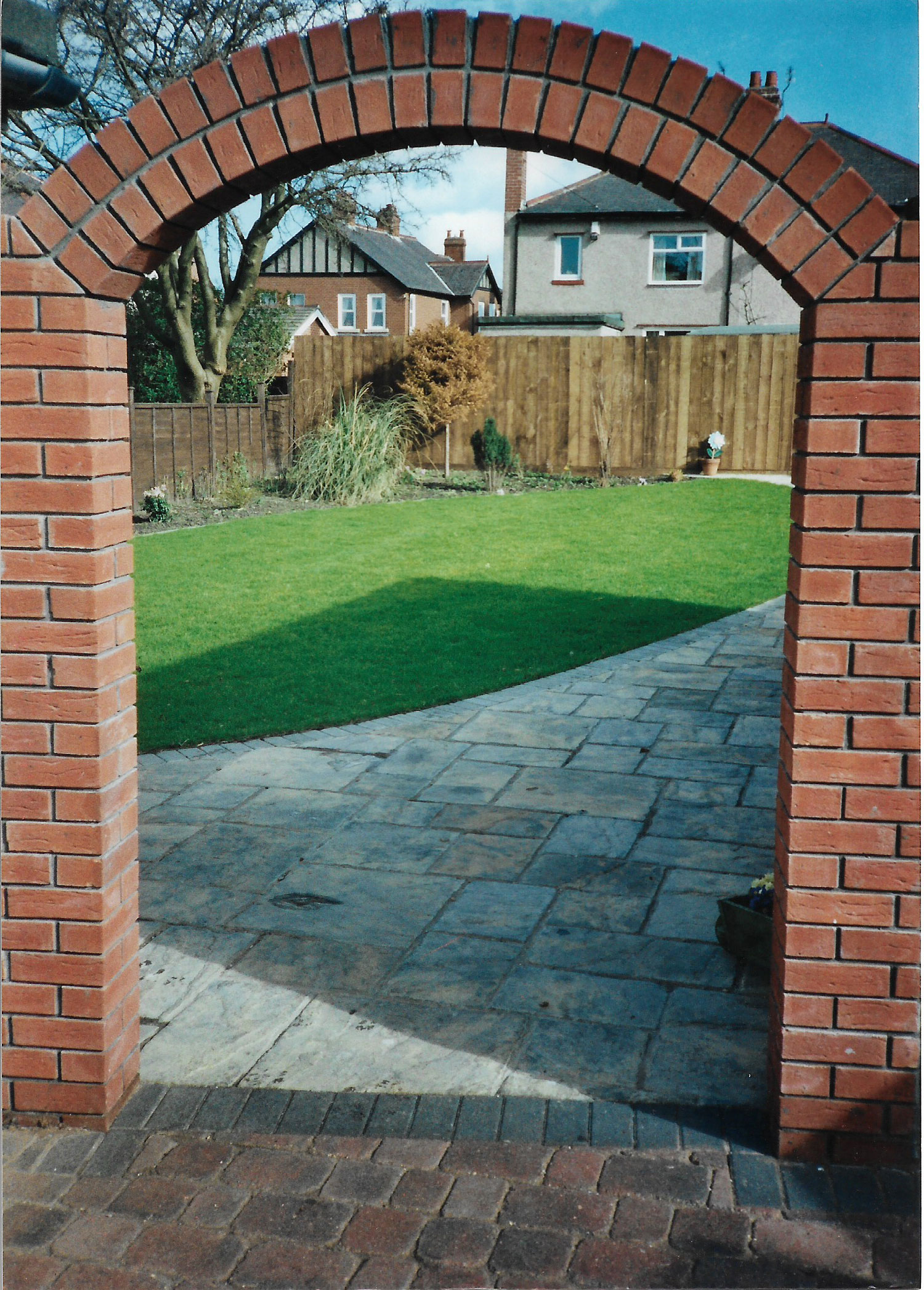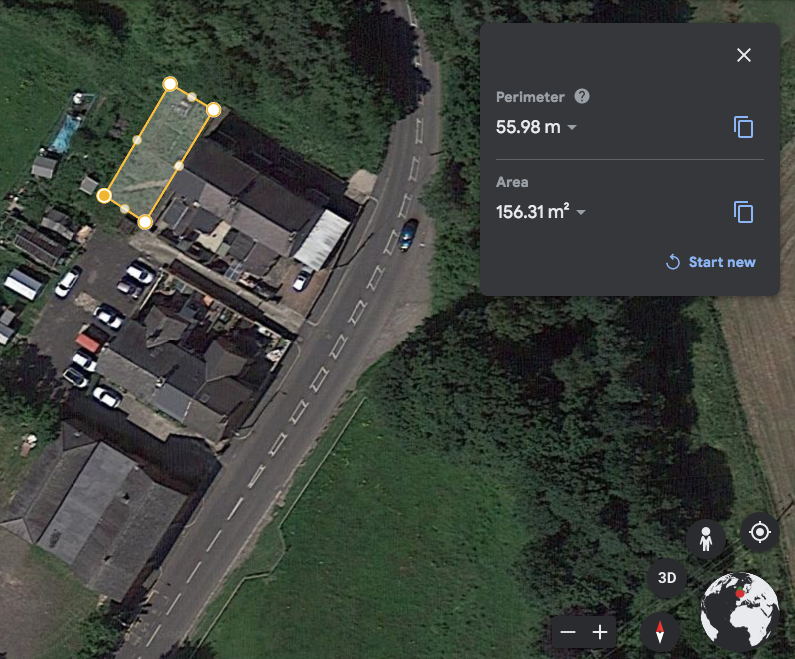









Garden landscaping is a popular form of property development in the North East of England that can significantly enhance the aesthetic appeal and functionality of a home. However, it's important for homeowners to engage with a reputable garden landscaper in order to ensure that the project is carried out to a high standard and meets all relevant regulations. 
One of the current trends in garden landscaping is the use of low-maintenance materials and features. Homeowners are increasingly looking for ways to reduce the time and effort required to maintain their gardens, and low-maintenance materials such as artificial turf and composite decking can help achieve this goal.
Another trend in garden landscaping is the use of eco-friendly materials and features. Homeowners are looking for ways to reduce their carbon footprint and improve the environmental performance of their homes, and eco-friendly garden landscaping can help achieve these goals. This can include the use of native plants, rainwater harvesting systems, and composting facilities. 
When engaging with a reputable garden landscaper, homeowners should consider a number of factors to ensure a successful and stress-free project. Firstly, homeowners should research potential landscapers thoroughly, looking at online reviews and examples of previous work to ensure that the landscaper has a good reputation and a track record of high-quality work.
It's also important for homeowners to discuss their needs and preferences with the landscaper in detail, to ensure that the design and features of the garden meet their requirements. Homeowners should ask for a detailed quote for the project, including all costs and any potential additional charges, to ensure that there are no surprises or unexpected costs further down the line.
In addition to design and installation considerations, homeowners should also be aware of the potential implications of engaging in a garden landscaping project. This can include the need for planning permission and building regulations approval, particularly for major changes such as the erection of a new fence or the installation of a standing area for a car.
Homeowners should also be aware of the potential disruption to their daily routine during the installation process, particularly if the garden is a key part of their home's functionality or entertainment space. A reputable landscaper should be able to provide a realistic timeline for the project and minimize disruption as much as possible.
In conclusion, garden landscaping is a popular and effective way to enhance the aesthetic appeal and functionality of a home in the North East of England. By engaging with a reputable garden landscaper, homeowners can ensure that the project is carried out to a high standard and meets all relevant regulations, as well as incorporate current trends in design and eco-friendliness. With careful planning and consideration, a successful and stress-free garden landscaping project can add significant value and enjoyment to a home.
Erecting a fence around a garden or allotment can have a number of implications for homeowners and gardeners in the North East of England. While a fence can provide privacy and security, it's important to be aware of the regulations and considerations that come with this type of project.
Firstly, it's important to consider the type of fence that is being erected. In some cases, planning permission may be required for certain types of fences, particularly if they are higher than a certain height or are located near a road or public footpath. Homeowners should check with their local council to determine whether planning permission is required and to ensure that the fence meets any relevant regulations and guidelines.
It's also important to consider the impact that the fence may have on neighbouring properties. A fence that blocks light or restricts access to neighbouring properties may be considered a nuisance and could lead to complaints or disputes with neighbours. Homeowners should ensure that any fence they erect is positioned in a way that minimizes its impact on neighbouring properties and does not cause any undue inconvenience.
When selecting a contractor to erect a fence, homeowners should ensure that they choose a reputable and experienced company that can provide references and examples of previous work. It's important to obtain a detailed quote for the work, including any potential additional costs, to avoid any unexpected surprises later on.
It's also important to consider the maintenance requirements of the fence. Some types of fencing require regular maintenance, such as painting or staining, in order to ensure their longevity and effectiveness. Homeowners should ensure that they are aware of the maintenance requirements of the fence they select, and factor this into their decision-making process.
Finally, it's important to be aware of the implications of erecting a fence on an allotment. In some cases, allotment owners may need to obtain permission from the local council or allotment association before erecting a fence. It's important to check with the relevant authorities before commencing any work on an allotment.
In conclusion, erecting a fence around a garden or allotment can provide privacy and security, but it's important to be aware of the regulations and considerations that come with this type of project. By checking with local authorities, selecting a reputable contractor, considering the impact on neighbours, and being aware of maintenance requirements, homeowners and gardeners can ensure that their fence is installed correctly and meets all relevant regulations and guidelines.
Below added Thursday 23rd February 2023
Frequently Asked Questions:
I am in North East England (UK) and I need to find out the price of the erection of a wooden fence around an allotment in County Durham. The measurements are 68 feet long x 30 feet wide by 4 feet high. Could you give me an estimate as to how much this would cost?
I can provide you with some general information that may help you estimate the cost of erecting a wooden fence around your allotment in County Durham.
The cost of erecting a wooden fence can vary depending on factors such as the quality of the wood, the height and length of the fence, the complexity of the design, and the location of the project. Based on the measurements you provided (68 feet long x 30 feet wide by 4 feet high), the perimeter of the fence would be approximately 196 feet (68+30+68+30), which could give you an idea of the amount of material required.
In general, the cost of materials for a wooden fence can range from £5 to £25 per linear foot, depending on the quality and type of wood. Therefore, the cost of materials for a 196-foot fence could range from £980 to £4,900.
The cost of installation can also vary depending on the contractor's experience, equipment, and other factors. Installation costs can range from £5 to £15 per linear foot, meaning the installation costs for a 196-foot fence could range from £980 to £2,940.
Considering both material and installation costs, the total cost of erecting a wooden fence around an allotment could range from £1,960 to £7,840. However, it's important to note that these are just estimated costs and may not reflect the actual cost for your specific project.
To get a more accurate estimate, you may want to contact local fencing contractors in your area to get quotes for the specific type of fence you want to install.
How much value (if any) would acquiring the land to this size adjacent to the property add to the value of the house?
The value that acquiring the land adjacent to the property would add to the value of the house would depend on various factors such as the location, the size of the house, the zoning regulations, and the intended use of the land.
In general, adding land to a property can increase its value as it can provide additional space for expansion, gardening, or other outdoor activities. It can also enhance the privacy and tranquility of the property. However, the exact value added would depend on the demand for land in the area, the current market conditions, and the characteristics of the property itself.
How would I measure the perimeter on Google Earth?
To measure the perimeter of your allotment on Google Earth, you can follow these steps: 
1 Open Google Earth on your computer or mobile device.
2 Type in the address or location of your allotment in the search bar.
3 Zoom in on the area until you can clearly see the boundary of your allotment.
4 Click on the "Ruler" tool icon on the top menu bar. It looks like a small ruler.
5 Choose "Line" as the measuring type.
6 Click on one corner of your allotment to start measuring the perimeter.
7 Click on each subsequent corner of your allotment until you have completed measuring the entire perimeter.
8 The perimeter distance will be displayed on the screen in your chosen units (e.g., feet, meters, etc.).
Note: The accuracy of the perimeter measurement will depend on the accuracy of the satellite imagery in Google Earth, which can vary depending on factors such as the location and the time of day when the image was captured.
Let's see what Brian at Avenue Builders comes back with a price!